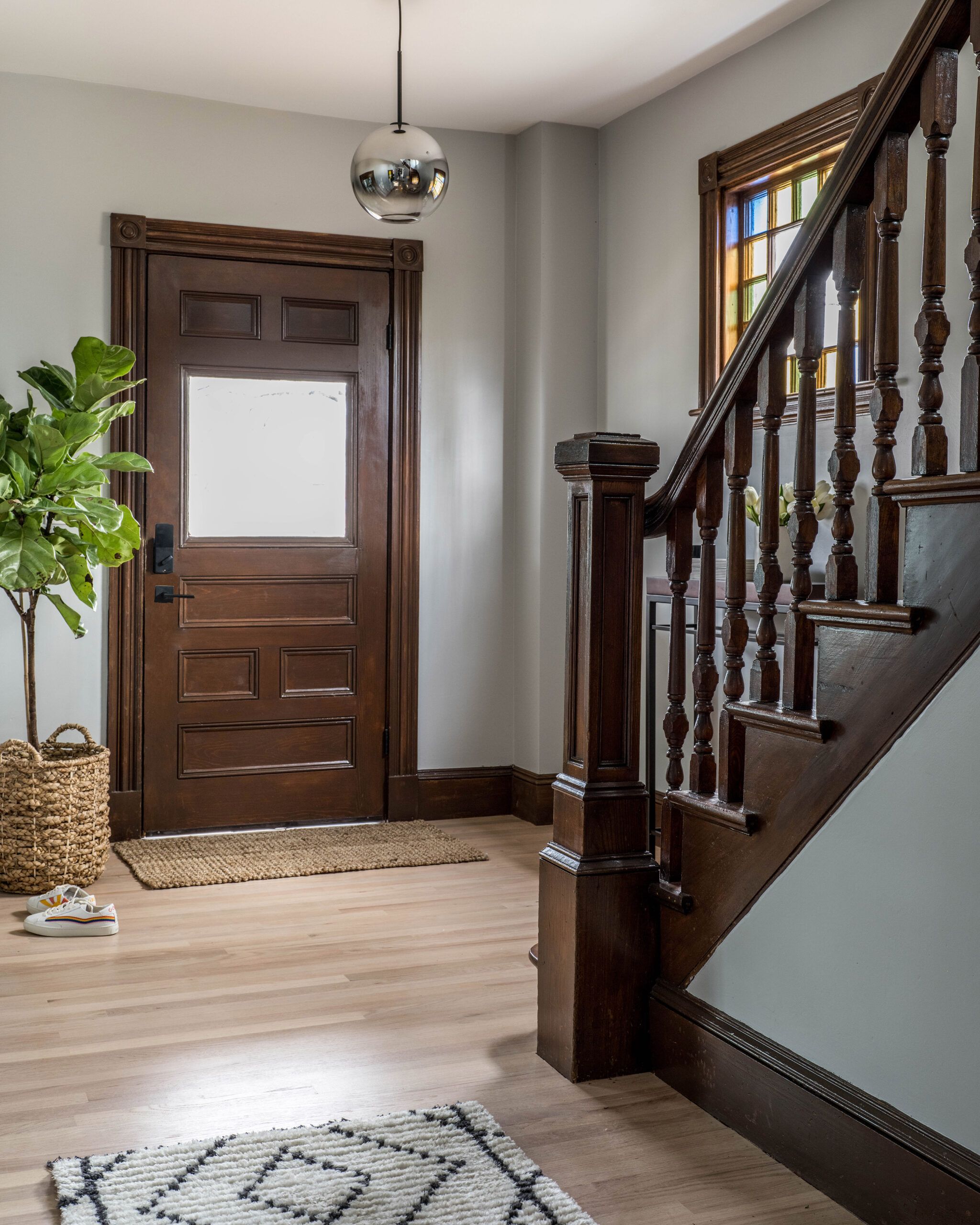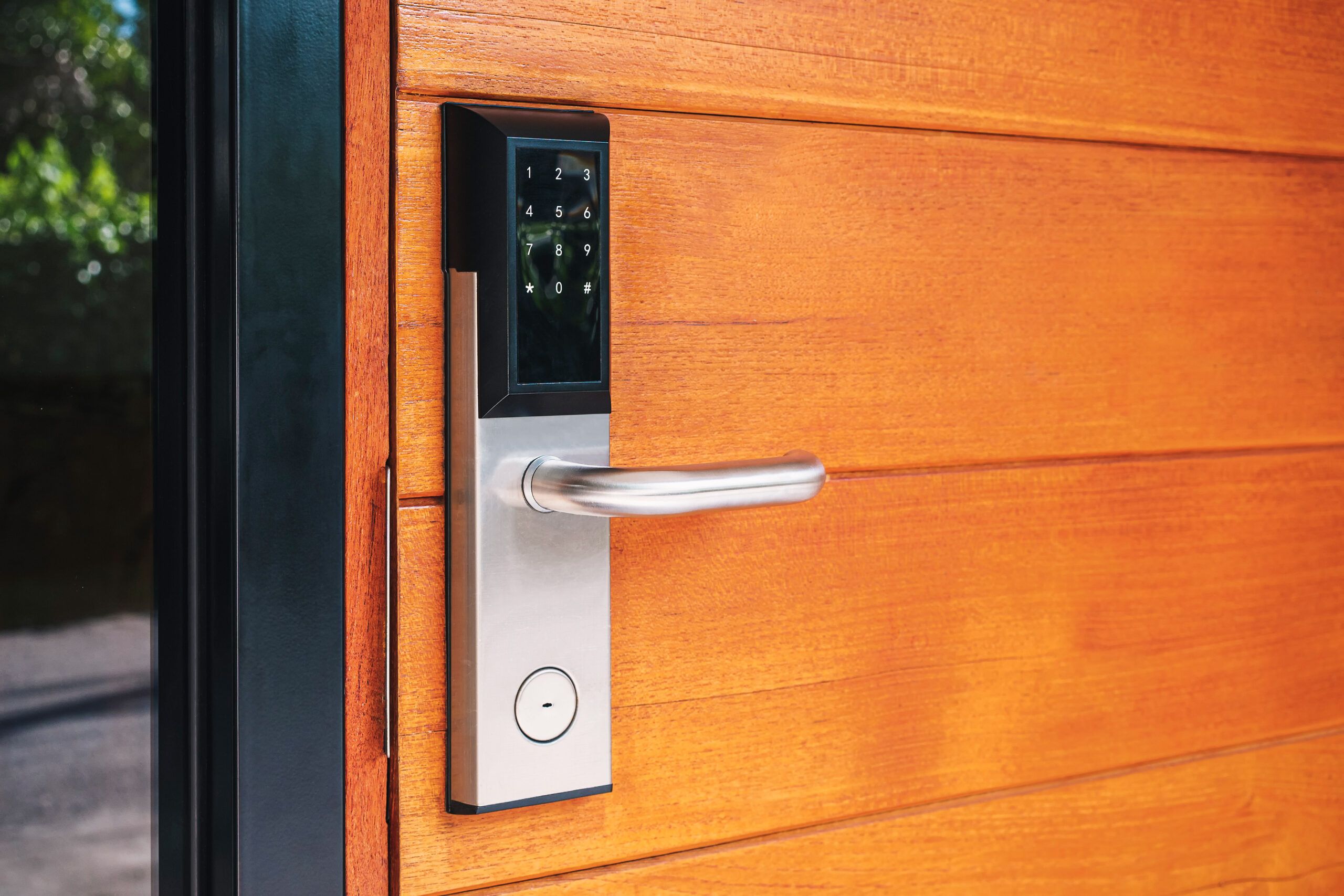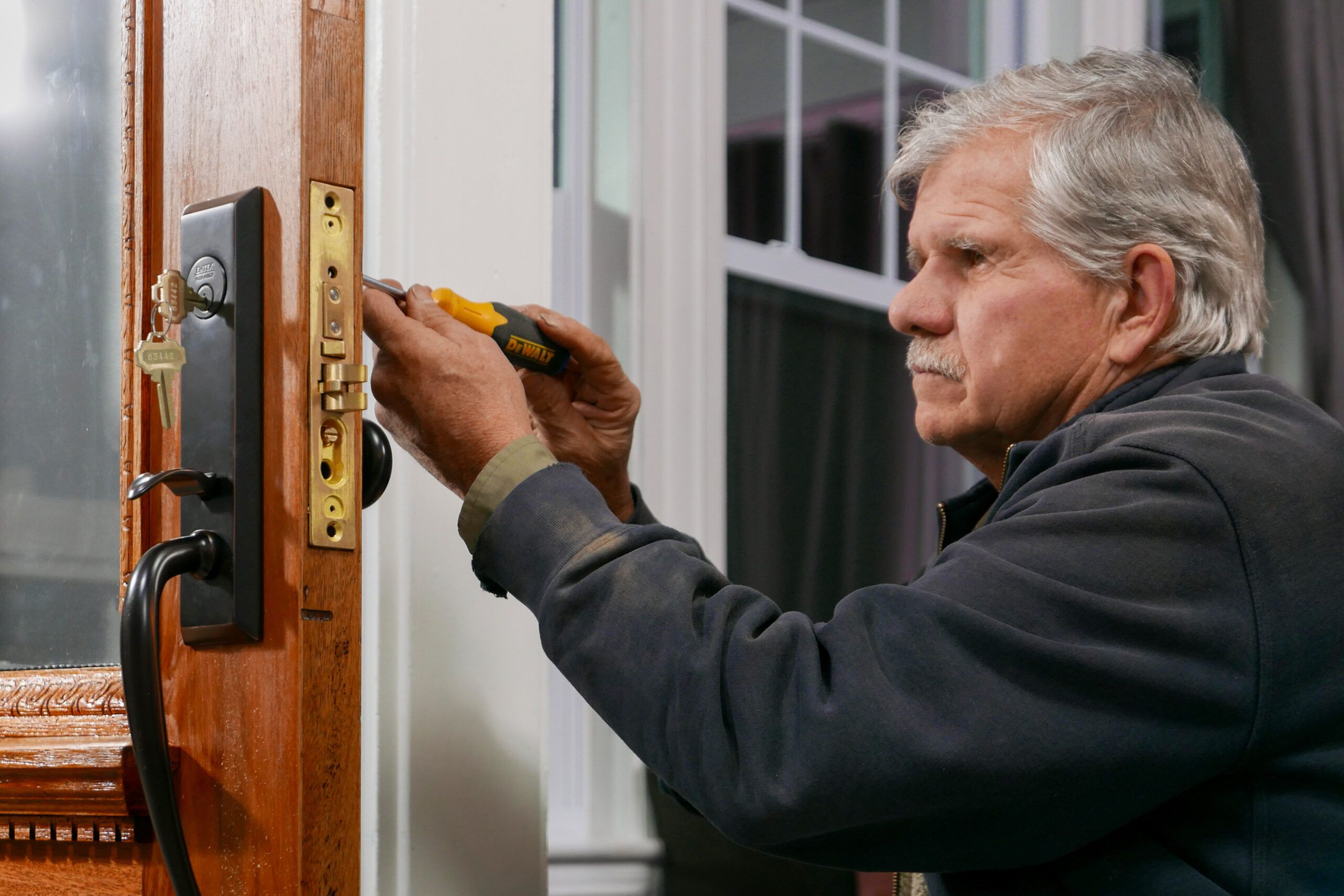Entry door locks are serious business. They need to be weather-resistant, function hundreds of thousands of times, and resist a possible attack by a would-be intruder. And while many homeowners know it’s important to have a safe, secure lock on their door, they probably don’t quite understand the different levels of security available. This guide will provide an overview of the different lock grades so homeowners can make an informed decision.
What Are Lock Grades?
Locks are graded based on a series of tests to determine how durable, heavy-duty, and break-in resistant they are. The tests are established by the American National Standards Institute (ANSI), which sets the standards for how many times a lock must be operated during a test, how many times it must be struck with a dead blow, and how much weight it can handle before failing.
While ANSI determines the requirements for the tests (and tests them), the Builders Hardware Manufacturers Association (BHMA) is also involved. In fact, the BHMA is the only organization to earn accreditation by ANSI to develop and maintain performance for locks and other door hardware.
During testing, locks are assigned one of three grades: Grade 1, Grade 2, or Grade 3. Grade 3 is considered to be the least secure and only suitable for residential doors, while Grade 2 and Grade 1 are increasingly secure and more appropriate for commercial doors. However, it’s important to note that ANSI/BHMA does not qualify locks as residential or commercial. These organizations simply assign lock grades.
Lock grade tests

Looking at each individual test these locks are put through will help explain what the locks are tested for.
- Cycles: This test involves opening and closing a lock a specific number of times before normal wear and tear begins to affect the lock’s performance.
- Vertical Load: This test evaluates the lock’s strength, simulating someone trying to knock the lock off the door.
- Impact: This test simulates someone kicking the door in, with the blow delivered directly to the lock.
- Torque: This test ensures that the lock knob or lever can withstand a specific amount of rotational force applied to a locked doorknob.
- Latch Bolt: This test involves pushing the door in and the latch must withstand a certain amount of force before failing.
It’s important to note that all these tests are performed in testing labs with consistent conditions. The doors and jambs used are the same for each lock, so the only variables involved are the locks themselves.
Locks Grades, Explained
Knowing how lock grades are determined will help homeowners, business owners, and other folks decide which lock to choose for their doors. The following list break downs the different lock grades, from least to most secure.
Non-graded: least secure
Not all locks are graded. In fact, there are many non-graded locks available from popular, reputable retailers. The reason they’re not graded is that they’re not intended for entry doors or high-security areas, but rather bathrooms, bedrooms, and other doors intended more for privacy than actual security.
This is not to say that all non-graded locks are untested, however. Reputable manufacturers put these locks through their own testing to ensure they meet the company’s standards. Some might also be tested by third parties. However, without being graded, they should not be used for security purposes.
Grade 3: secure
Grade 3 locks are the least secure of the graded locks, but that doesn’t mean they’re not quality. They do have to pass a set of tests designed to push them to their limit and guarantee that they’re safe and functional. The following are the test standards that Grade 3 locks met during testing:
- Cycle Test: 200,000 cycles
- Vertical Load Test: 150 pounds
- Torque Test (Locked):
- Knob: 120 pounds per foot
- Lever: 225 pounds per foot
- Impact: 2 blows with 60 pounds
- Latch Bolt Strength: 600 pounds
Grade 2: more secure
Grade 2 locks are the middle ground of graded locks. They’re considered heavy-duty for residential applications and light-duty for commercial applications. They’re typically made from better materials and far more serviceable than a Grade 3 lock. Grade 2 locks must pass the following testing standards:
- Cycle Test: 400,000 cycles
- Vertical Load Test: 250 pounds
- Torque Test (Locked):
- Knob: 150 pounds per foot
- Lever: 450 pounds per foot
- Impact: 2 blows at 60 or 90 pounds
- Latch Bolt Strength: 600 pounds
Grade 1: most secure
Grade 1 locks are the highest quality in terms of security and durability. They’re tested to higher standards with more weight and force. They’re considered heavy-duty for commercial and residential applications, though finding Grade 3 locks that are stylish enough has historically been a challenge.
- Cycle Test: 800,000 cycles
- Vertical Load Test: 360 pounds
- Torque Test (Locked):
- Knob: 300 pounds per foot
- Lever: 700 pounds per foot
- Impact: 2 blows at 60, 90, or 120 pounds
- Latch Bolt Strength: 1,200 pounds
Are Electronic Door Locks Graded?

When electronic and keypad locks, otherwise known as smart locks, first hit the market many years ago, most were not graded. They were often made from lower-quality materials and not suitable for exposure to the elements. However, in recent years, most electronic entry locks have been graded. In fact, there are quite a few Grade 1 electronic locks available, with Wi-Fi, touchpads, and Bluetooth technology.
Do You Need to Upgrade Your Locks?
In most cases, a Grade 3 lock is suitable for a residential entryway. However, if you’d like more assurance or you don’t know if your lock is even graded at all, it’s a wise idea to upgrade to a heavier-duty lock. Grade 2 and Grade 1 locks are considered heavy-duty for residential use, and since more stylish and tech-infused Grade 1 and Grade 2 locks are on the market now, many homeowners are increasing their door lock security as much as possible. If you have the budget and need peace of mind, we highly suggest upgrading your door locks.

